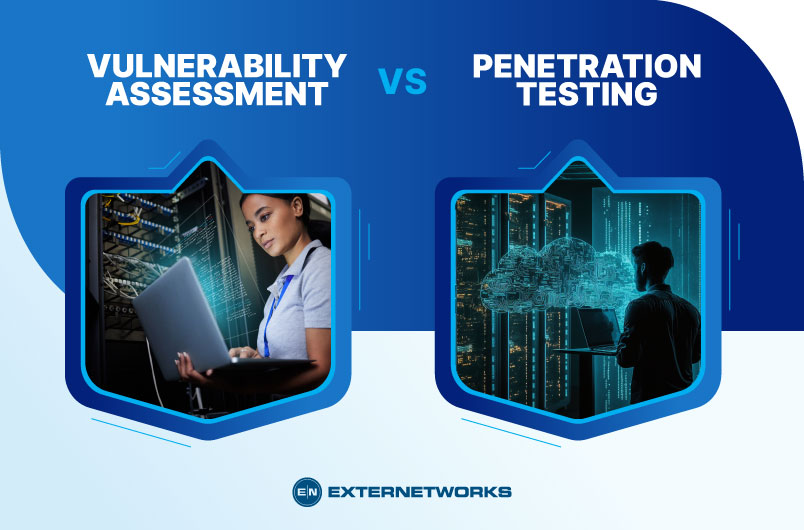28.4k views
Vulnerability Assessment and Penetration Testing (VAPT) is a systematic approach to identifying weaknesses in a network or system. The goal is to identify vulnerabilities before they are exploited. This helps organizations prevent attacks and reduce their exposure to cyber threats.
Are Vulnerability Assessments Different From Penetration Tests? Vulnerability assessments and penetration tests have similar goals, but each approach is designed to accomplish these goals differently.
Organizations use VAPT to protect against cyberattacks, identify weaknesses within their systems, and ensure compliance with industry regulations. The process involves gathering information from various sources, including internal employees, third parties, and external resources.
A VAPT is performed using various tools and techniques to assess the security posture of a given network or system. These include scanning, mapping, enumeration, and other methods. These assessments are then analyzed to determine whether the network or system has any known vulnerabilities.
The VAPT process gathers information from different sources, including the organization’s network architecture, system logs, and user profiles. This helps identify potential vulnerabilities in the organization’s systems. Once identified, they will be tested using automated tools and manual techniques.
The most common reasons organizations conduct VAPT include:
Vulnerabilities can occur when an organization doesn’t follow best practices with its technology. For example, poorly configured servers can make it easier for hackers to access sensitive data. Or outdated operating systems can leave computers open to attack.
A vulnerability assessment scans external devices connected to your network. It identifies flaws in software and operating systems so that you can patch them before hackers use them to attack your company.
Vulnerability assessments typically start with a scan of your entire network. During this scan, the tool looks for open ports and other signs of possible vulnerabilities. The tool will notify you if any problems are found during the scan.
During a vulnerability assessment, the tool scans both internal and external devices. It checks for known vulnerabilities like SQL injection and cross-site scripting, and it also looks for unknown vulnerabilities.
The results of a vulnerability assessment include:
A penetration test is a method of testing a system’s security posture against known threats. It involves simulating attacks from outside sources to see if the organization has any holes in its defenses. The goal is to find weaknesses that hackers might exploit.
The test involves actively trying to break into a computer system. Hackers use this technique to discover new ways to get past defenses. They also check whether the security measures put in place work as intended.
Penetration tests have many benefits. They allow organizations to discover hidden vulnerabilities before attackers succeed in exploiting them. They also help organizations develop policies for dealing with security incidents. Finally, penetration tests can help companies meet compliance requirements such as HIPAA or PCI DSS.
Penetration tests can reveal weaknesses in your organization’s network infrastructure, allowing attackers to access sensitive information. They can also uncover flaws in your company’s software systems, which may leave you vulnerable to cyberattacks.

The two terms are often confused, but vulnerability assessments look at the technical aspects of a system, whereas penetration tests look at the people behind it. A vulnerability assessment will tell you if someone has found a way into your network. At the same time, a penetration test will show you where that person might be able to access information or steal money from your business.
In short, A vulnerability assessment looks at the overall health of a network or system. It identifies vulnerabilities but doesn’t attempt to break into the system. A penetration test attempts to break into a system and identify vulnerabilities.
VAPT is a complex process that requires a lot of planning. The first step is to identify what you want to test. This will include which systems should be tested, who needs access to those systems, and where they are located. Then you need to determine what vulnerabilities exist within each system. A vulnerability assessment toolkit is one way to accomplish this task.
Conclusion – Vulnerability assessment and penetration testing (VAPT) refers to a process that includes vulnerability identification and exploitation. VAPTs are performed to help organizations understand the current state of their network or system. They also provide insight into possible future issues.
Get robust Cyber Threat Monitoring Services to protect your IT infrastructure.
